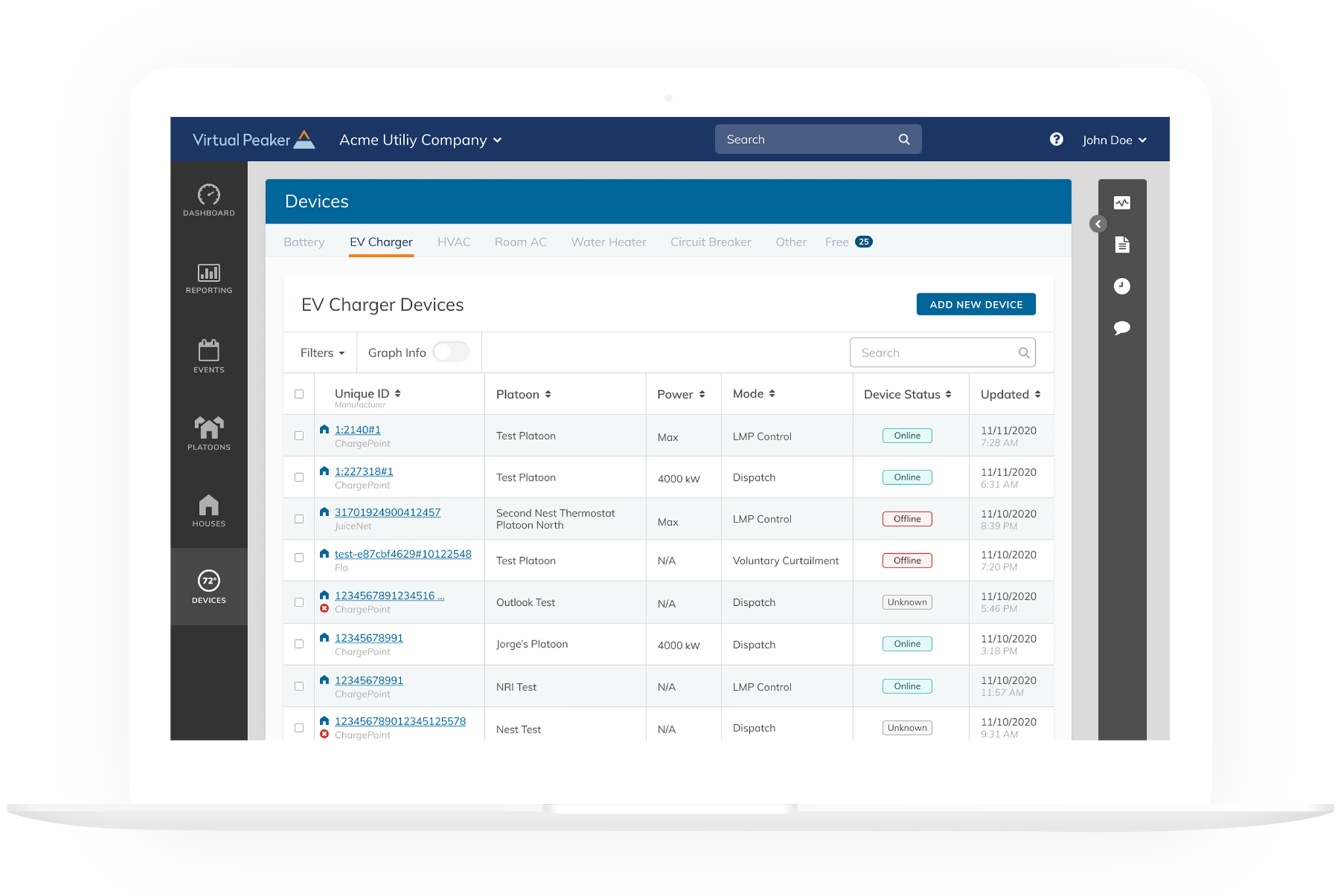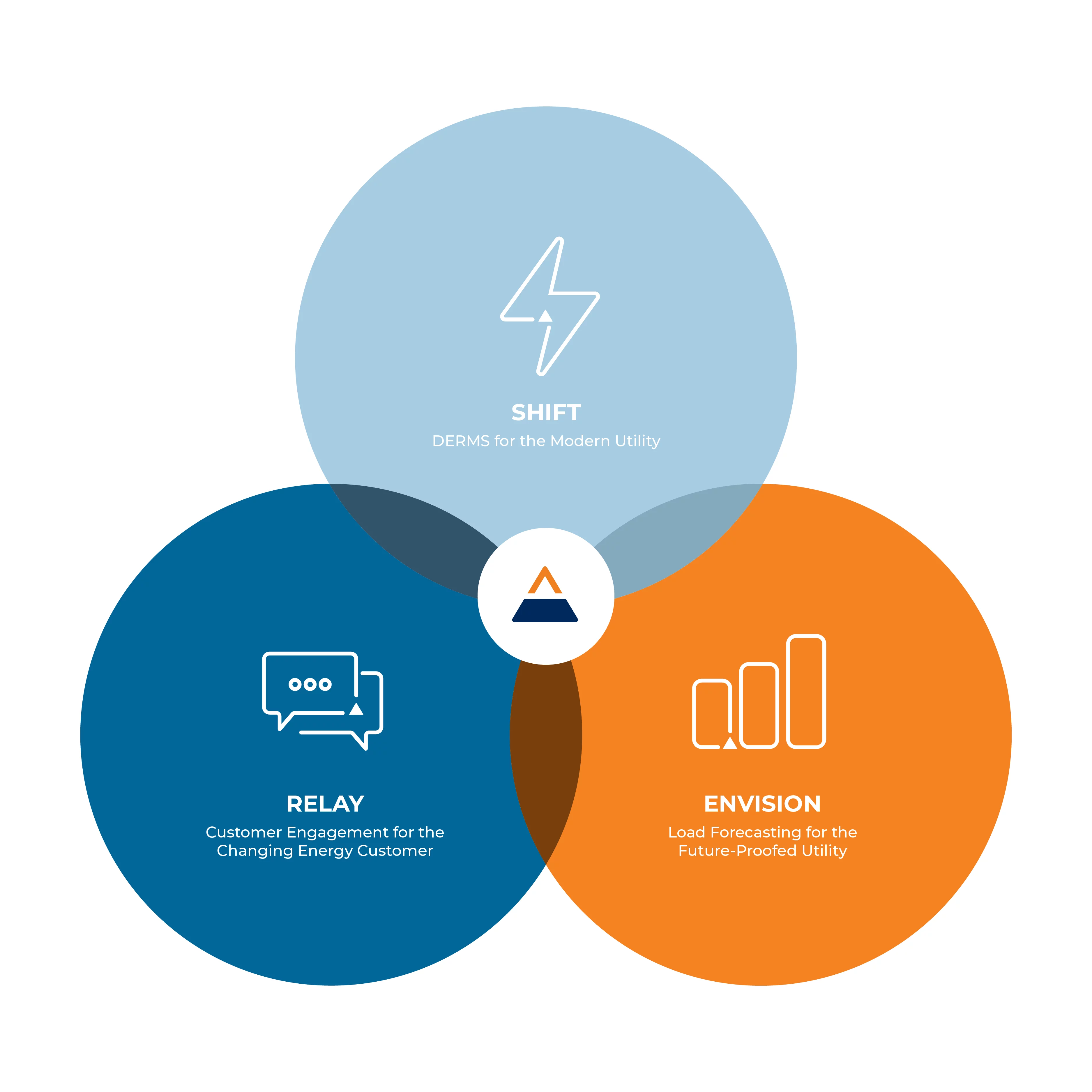
Manage EV Charging Impact on the Grid
Virtual Peaker provides utilities with the expertise and support to prepare for the impact of the next generation of transportation. Our DER management platform enables the successful delivery of managed charging and capturing of analytics to capitalize on the transformational growth of the electrical vehicle industry.
Support grid needs with an EV Managed Charging Solution. From load shifting to peak load reduction, we ensure your driver’s needs are met through intelligent algorithms optimized for both customer driver experience and program objectives.
Expanded Performance Measurement
Optimize program performance by integrating chargers and vehicle telematics for greater insight into demand giving you the ability to make more informed decisions.
User-Experience that Encourages Driver Adoption
Build trust with vehicle owners with innovative offerings that meet their privacy needs and empower them to take charge with a driver-first experience to EV charging.
More Ways to Supply Grid Value
Unlock an expanding source of flexible capacity for grid services with Vehicles-to-Grid (V2G). V2G supports bidirectional charging, allowing for the two-way flow of energy for vehicles that can charge at the least expensive time of the day, and return unused energy to the grid.
New Growth Paths
Participate in new revenue-generating opportunities, such as creating special EV charging rates, with the input of EV telematics. Accessing direct connections with car manufacturers will provide you with analytics and program design options to unlock value from EV resources.
Gaining Strategic Value From Your EV Charging Program
Watch SnoPUD and ChargePoint discuss key takeaways and best practices for getting the most from your EV residential charging programs. Understanding key metrics, including EV adoption forecasts, load shifting, financial value, and system distribution. This webinar shares tips for determining your demand response program needs and how EVs can contribute to the overall DR programmatic success.

PLATFORM
A Comprehensive EV Experience
Connect Vehicles with Shift
Our extensive ecosystem of EV and EVSE integrations enables greater customer participation.
Engage Drivers with Relay
Inform and recommend customers to charge vehicles at a low-rate time via branded and automated SMS or email.
Forecast EV Load with Envision
Integrate capacity forecasting of EV load for holistic insight.
One Platform, All Device Types
Our unified platform allows utilities to manage multi-device, multi-OEM demand response programs all in one place: start an EV DR program, then layer on other device types without the expense or hassle of adding on additional software.
.
Integrated & Future-Proofed
Virtual Peaker utilizes telematics data and internet enabled EV chargers within the same interface, and boasts numerous integrations to connect with the latest technology.
Expert Knowledge & Support
Technical setup with vendors and program rollouts are streamlined so you can get started quickly and with ease. We’ll guide you through any complexities so you can take full advantage of your EV-managed charging solution in a rapidly evolving industry.
TESTIMONIALS
What Our Users Are Saying
Connect
Learn More About How Our Tech Can Help You.
We’re empowering modern utilities to accelerate grid modernization using the friendliest distributed energy resources platform on the planet.